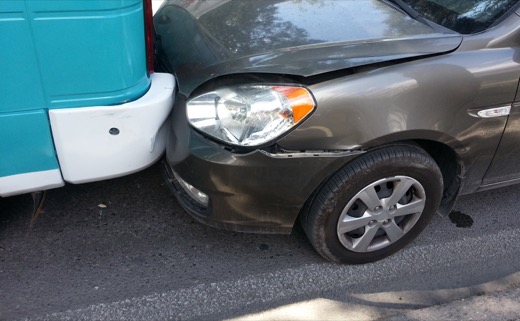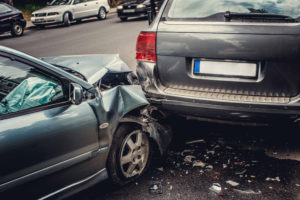There are numerous myths and misconceptions surrounding car accidents, from what a driver should do or should not do, to how insurance companies handle claims. The consequences of believing these misconceptions can be large. By making yourself aware of the facts, you can avoid these pitfalls and protect yourself and your loved ones.
Leaving the Scene of an Accident
If you were in a car accident, you need to stop. Failure to stop is known as a hit skip, or hit and run, and carries criminal charges. This applies whether you hit a stationary object, such as a sign or the curb, or another vehicle, even if the damage was minor.
Section 4549.02 of the Ohio Revised Code requires the driver of the car involved in the accident to stop and provide contact information to anyone injured, the driver of the other car, and any law enforcement present. If you hit a parked car and are unable to locate the owner, you must leave your contact information with the unattended vehicle so that the owner can contact you later.
Violating Ohio’s hit skip laws is a first degree misdemeanor at the least—which can rise to a felony of the fifth degree if someone is seriously injured—and comes with a class 5 license suspension and six points on your license. A class 5 suspension can run from six months to three years. The first degree misdemeanor charge carries additional penalties, too: up to six months in jail and up to a $1,000 fine. Furthermore, your insurance rates may rise due this black mark on your record.
For people who depend on their cars to get to work or school, fleeing the scene of an accident—no matter how minor—can result in devastating penalties. An experienced lawyer at the Ohio Car Accident Lawyers can defend you against a charge for a hit skip. We can protect your rights and fight against invalid charges, and we can negotiate on your behalf for reduced penalties.
Damage to Vehicle, Injuries to Occupant
Occupants can experience significant injury even in low speed/low impact accidents that do not result in any visible damage to their vehicle. Although vehicles may be moving slowly, the forces involved are massive due to the weight of the cars. A human occupant has to contend with thousands of pounds of metal, and even at low speeds, this can translate to tons of impact force, causing injuries at speeds as low as 2.5 miles per hour.
The idea that low speeds and low impacts should result in minor injury—if at all—to a vehicle’s occupants is a myth that insurance companies love. By falsely correlating crash severity with injury risk, insurers avoid paying out for injuries stemming from minor accidents. You may need an attorney to help you assemble evidence and expert witnesses to fight against the insurance company. The experienced lawyers at the Ohio Car Accident Lawyers are here to help.
Injuries after an Accident
Not all injuries caused by an accident will be obvious immediately after the crash, either. The shock of a crash can send adrenaline levels spiking, and many people injured in an accident simply do not notice the pain of an injury until the adrenaline wears off. Furthermore, many types of injuries take some time to manifest, and psychological damage from an accident can be difficult to diagnose. Ohio law gives you two years to bring a lawsuit for claims for bodily injury and damage to personal property, but it is wise to bring your case sooner rather than later.
The Police Report Is Not Final Proof of Fault
An Ohio traffic crash report can be an important tool when you are trying to get compensation for your injuries and property damage after an accident. The police are trained to investigate accidents, and their reports are detailed and full of useful information. These reports often contain statements about who was at fault for the accident, based on the officer’s investigation. Insurance companies, judges, and juries usually trust the officer’s assessment of the accident, so the police report can be very persuasive in establishing liability. They are not, however, the final word on the matter. For complex accidents, evidence of fault can be conflicting, and often the people involved in an accident and witnesses to the accident have differing accounts of what happened. Therefore an officer’s interpretation can be wrong.
Insurance companies will conduct their own investigations into an accident. Their assessment usually aligns with the police report, but not always. It is their judgment that determines their settlement offers, not what is written in the report. If the settlement is insufficient, you may wish to bring your case to court. Having a lawyer experienced in auto accidents on your side is important if you wish to contest the officer’s assessment of who was at fault. The Ohio Car Accident Lawyers is dedicated to bringing the strongest case possible and getting you the compensation you need.
Insurance Rates After an Uninsured Motorist Claim
Ohio is an at-fault state, therefore the driver at fault for the accident bears the costs of any injuries and damages caused. Usually you simply file your claim with their insurance company, and hope that the settlement covers your costs. But when the at-fault driver is underinsured or uninsured, you can either sue them directly and then wait for the case to wend its way through the full legal process, or you can make a claim on your own insurance policy if you have uninsured/underinsured motorists coverage.
Some people are hesitant to make a claim on their insurance policy for fear that their premium rates will increase. Section 3937.23 of the Ohio Revised Code protects these people. If the insured person is involved in an accident with an underinsured or uninsured motorist, and is not at fault for the accident, and has not broken any laws as a result of the accident, then insurance companies are expressly forbidden from increasing your rates.
If you or a loved one has been involved in a car accident, get a free consult with the Ohio Car Accident Lawyers today.





